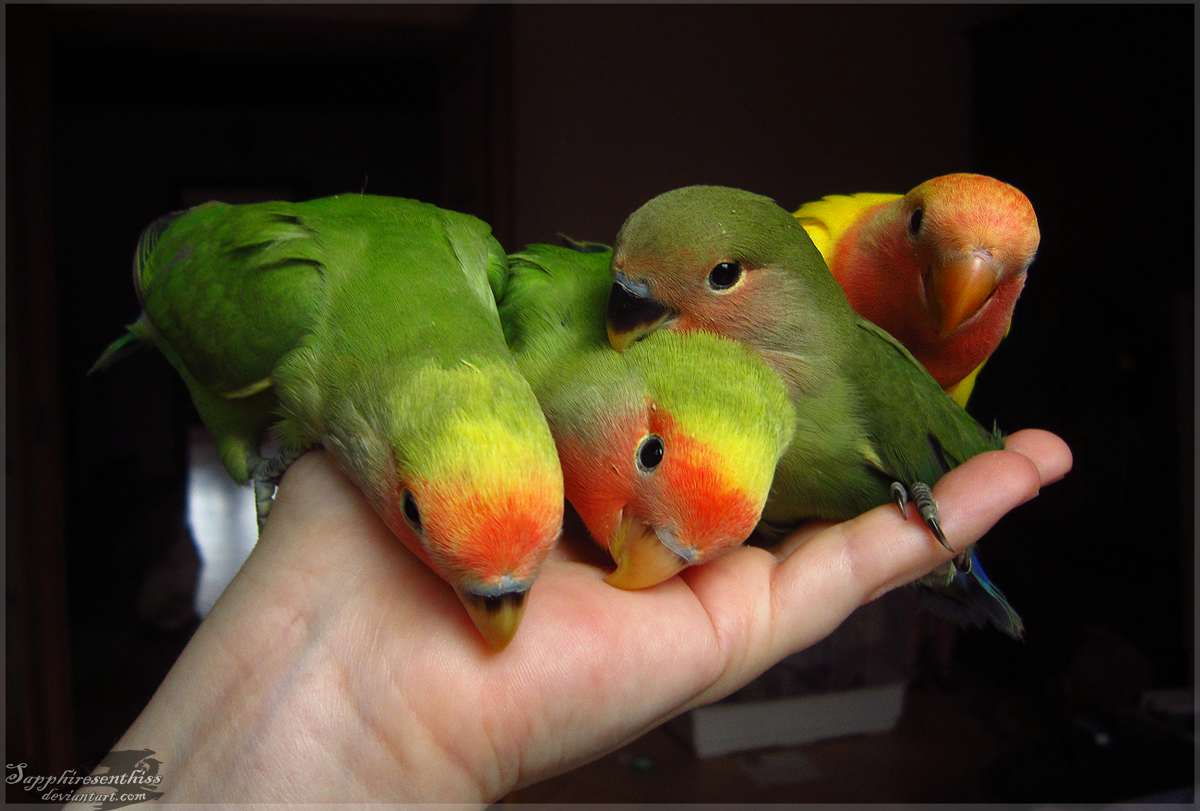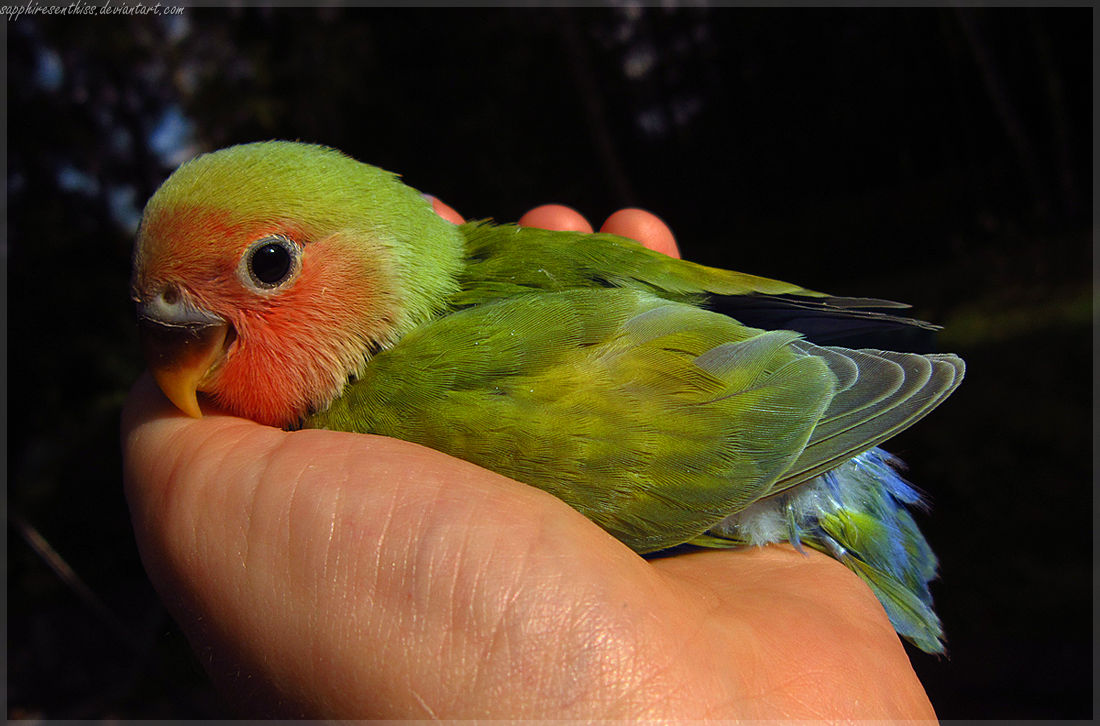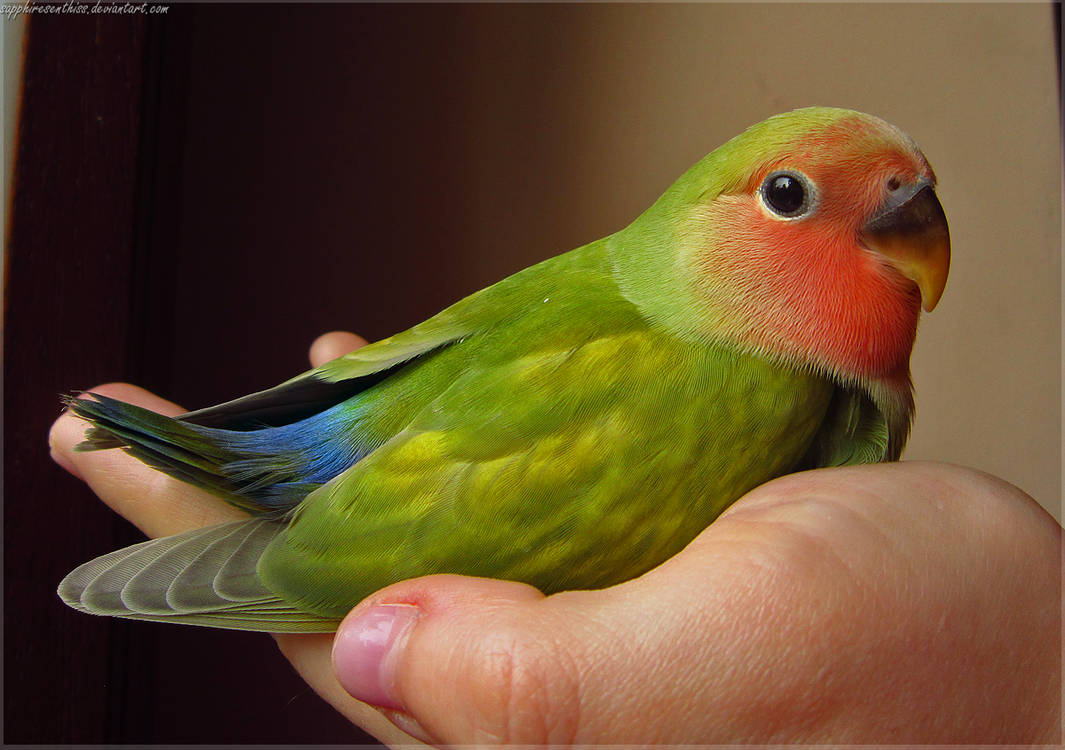Train your lovebirds with expert tips! Learn effective techniques, avoid common mistakes, and build a strong bond. Discover the joy of Can You Train Lovebirds!
Introduction
Welcome to the fascinating world of Lovebirds – intelligent and charming companions that have captured the hearts of bird enthusiasts worldwide. In this introduction, we embark on a journey to discover the unique qualities that make Lovebirds not only captivating pets but also trainable companions.
Overview of Lovebirds
Lovebirds, members of the parrot family, are renowned for their vibrant plumage, curious nature, and social behaviors. These small-sized parrots are often cherished for their lively personalities and the joy they bring to their owners. As we delve into the world of Lovebirds, we’ll explore the distinct characteristics that set them apart and make them ideal candidates for training.
Lovebird Training Secrets
Training Lovebirds extends beyond the simple acquisition of tricks; it forms the foundation for a strong and positive relationship between you and your feathered friend. This section will delve into the numerous benefits of training Lovebirds, including:
- Bond Formation: Training establishes a strong bond, fostering a sense of trust and companionship.
- Intellectual Stimulation: Lovebirds, being intelligent creatures, thrive on mental stimulation. Training provides an outlet for their mental energy.
- Positive Environment: A well-trained Lovebird contributes to a harmonious household, reducing stress for both the bird and its owners.
Whether you’re a seasoned Lovebird owner or considering bringing one into your home, understanding the significance of training is key to unlocking the full potential of these delightful avian companions.
Understanding Lovebird Training
Lovebird training is an intricate process that requires a comprehensive understanding of these intelligent avian companions. This chapter delves into the intricacies of training lovebirds, focusing on fundamental techniques and addressing common behavioral concerns.
Basic Training Techniques
Successful lovebird training begins with mastering basic techniques that lay the foundation for more advanced commands. Here are key components:
- Positive Reinforcement: Lovebirds respond exceptionally well to positive reinforcement. Reward desired behaviors with treats or verbal praise to reinforce good conduct.
- Consistency: Consistent training sessions establish a routine, allowing lovebirds to grasp commands more effectively. Daily, short sessions work best to maintain their attention.
- Clicker Training: Incorporating clicker training can enhance the learning experience. The distinct sound of a clicker signals to the bird that it has performed the desired behavior correctly.
Common Behavioral Concerns
Addressing and understanding common behavioral issues is crucial for successful lovebird training. Here are insights into managing specific concerns:
- Biting: Lovebirds may bite due to fear or territorial instincts. Implement positive reinforcement techniques to discourage biting and gradually build trust.
- Peeing Outside the Cage: Potty training is essential. Use consistent cues when placing your lovebird in designated areas for bathroom activities.
- Flying Away: Implement flight training gradually, ensuring a secure environment. Teach commands like “stay” and “come” to minimize the risk of escape.
By comprehending these fundamental training aspects, lovebird owners can embark on a rewarding journey of shaping their pet’s behavior positively.
Training Lovebirds to Talk
Training lovebirds to talk is a fascinating aspect that taps into their innate vocal abilities, making them even more delightful companions. This chapter delves into the intricacies of fostering speech in lovebirds and the effective techniques for teaching them to communicate.
Can Lovebirds Talk?
Lovebirds, despite their small size, possess impressive vocal capabilities. While they may not match the extensive vocabulary of larger parrots, many lovebirds can be trained to mimic words and sounds. Understanding the potential for speech is the first step in this engaging training journey.
- Exploring Vocal Abilities: Lovebirds naturally communicate through chirps, whistles, and squawks. Training them to articulate words involves tapping into this inherent vocal range.
- Training Possibilities: Lovebirds can learn to mimic words and phrases through patient and consistent training. It’s essential to acknowledge that individual birds may vary in their aptitude for talking.
Effective Techniques for Teaching Speech
Teaching lovebirds to talk requires a blend of patience, repetition, and positive reinforcement. Here are key techniques for successfully incorporating speech into their repertoire:
- Tips for Mimicking Words: Start with simple words or phrases and repeat them consistently. Use a calm and encouraging tone to create a positive association with the words.
- Importance of Repetition: Lovebirds learn through repetition. Regularly expose them to the chosen words or sounds, reinforcing the learning process.
- Patience as a Virtue: Each lovebird has its own pace of learning. Exercise patience, and avoid overwhelming them with too many words at once.
By embracing these effective techniques, lovebird owners can unlock the joy of communication with their feathered companions, enhancing the bond between pet and owner.
Potty Training Lovebirds
Potty training is a pivotal aspect of lovebird care, contributing to a cleaner and more enjoyable living environment for both the bird and its owner. This chapter focuses on the feasibility of potty training lovebirds and provides practical tips for fostering positive bathroom habits.
Can Love Birds Be Potty Trained?
Exploring the realm of potty training for lovebirds reveals interesting possibilities. While not every lovebird may master this skill, many can be trained to exhibit favorable bathroom behaviors. Understanding the potential for potty training lays the foundation for a more harmonious coexistence.
- Individual Variances: Each lovebird is unique, and their aptitude for potty training may vary. Recognizing and respecting these individual differences is crucial in the training process.
- Insights from Experts: Seek guidance from experienced lovebird owners or avian specialists who can share valuable insights and tips based on their expertise.
Practical Tips for Potty Training
Navigating the intricacies of potty training involves employing practical and effective strategies. Here, we delve into actionable tips for encouraging positive bathroom habits in lovebirds:
- Encouraging Routine: Establish a consistent routine for bathroom breaks. Lovebirds respond well to predictability, and a structured schedule aids in reinforcing positive behaviors.
- Strategic Placement of Cage Accessories: Place perches, toys, and feeding stations strategically within the cage to encourage designated bathroom areas. Lovebirds are more likely to associate specific locations with elimination.
- Addressing Challenges: Anticipate and address challenges that may arise during the training process. Patience is key, and a gentle approach to correction ensures a positive learning environment.
Potty training, when approached with patience and a clear understanding of lovebird behavior, can significantly enhance the living experience for both the bird and its owner. Implementing these practical tips sets the stage for successful potty training endeavors.
Preventing Lovebird Biting

Lovebird biting behavior is a common concern for owners, and understanding the underlying reasons is essential for effective training. This chapter delves into the intricacies of lovebird biting, providing insights into its root causes and outlining actionable steps to prevent and address this behavior.
Understanding Lovebird Biting Behavior
Lovebirds, despite their small size, may exhibit biting behavior for various reasons. Understanding these reasons is crucial for implementing targeted training strategies:
- Territorial Instincts: Lovebirds can be territorial, and biting may be a response to perceived threats within their environment.
- Fear or Stress: Biting can be a manifestation of fear or stress. Identifying and mitigating sources of stress is key to addressing this behavior.
- Communication: Lovebirds use biting as a form of communication. Recognizing the different types of bites and their meanings is essential for effective training.
Effective Training Techniques to Prevent Biting
Preventing lovebird biting involves a combination of proactive measures and positive reinforcement training techniques:
- Establishing Trust: Building trust between the owner and the lovebird is foundational. Spend quality time bonding with your bird to create a positive association.
- Positive Reinforcement: Reward desirable behaviors with treats and praise. Positive reinforcement reinforces good conduct and helps diminish the likelihood of biting.
- Recognizing Warning Signs: Understanding the warning signs leading to biting is crucial. Observing body language cues enables timely intervention.
- Consistent Correction: In cases where biting occurs, employ consistent correction techniques without resorting to punishment. Redirecting the bird’s attention to positive activities reinforces proper behavior.
- Professional Guidance: Seek advice from avian behaviorists or experienced lovebird trainers for personalized guidance tailored to your bird’s specific needs.
Addressing lovebird biting behavior is a gradual process that requires patience, consistency, and a deep understanding of avian psychology. Implementing these techniques lays the foundation for a trusting and harmonious relationship between the owner and their feathered companion.
Advanced Training Tips
Unlocking the full potential of your lovebird’s intelligence involves delving into advanced training techniques and maintaining a consistent, stimulating environment. This chapter explores strategies for teaching your feathered companion tricks and commands, ensuring mental engagement and fostering a deep bond between owner and bird.
Teaching Tricks and Commands

Lovebirds, renowned for their intelligence, thrive on mental stimulation. Here’s a guide to introducing advanced tricks and commands:
Establishing a Training Routine
- Structured Sessions: Schedule regular training sessions, keeping them short and focused to maintain your bird’s interest.
- Positive Reinforcement: Continue emphasizing positive reinforcement, rewarding successful attempts with treats and praise.
Exploring Lovebird Intelligence
- Cognitive Challenges: Engage your lovebird’s cognitive abilities with puzzles and interactive toys, fostering problem-solving skills.
- Simple Commands: Start with basic commands like “step up” and gradually progress to more complex tricks as your lovebird becomes proficient.
Maintaining Consistency in Training
Consistency is paramount in advanced training to reinforce positive behaviors and ensure ongoing progress:
Incorporating Variety
- Changing Environments: Introduce new elements to training sessions, such as different rooms or perches, to prevent monotony.
- Varied Commands: Teach a repertoire of tricks and commands to maintain mental agility and prevent boredom.
Positive Interaction
- Bonding Through Training: Use training sessions as opportunities for positive interaction, strengthening the emotional connection between you and your lovebird.
- Reading Body Language: Pay attention to your bird’s body language during training to gauge interest and adjust the difficulty level accordingly.
Advanced training not only enhances your lovebird’s skills but also deepens the bond between you and your feathered companion. By incorporating variety, positive reinforcement, and consistent training, you provide an enriching environment that allows your lovebird to thrive intellectually and emotionally.
Frequently Asked Questions (FAQs)
Navigating the world of lovebird training often raises questions among owners seeking to provide the best care for their feathered companions. This section addresses common queries related to lovebird behaviors, training challenges, and the nuances of their communication.
Can Lovebirds Talk Like Parrots?
Addressing the Vocal Abilities
Lovebirds, while not as renowned for talking as larger parrot species, do possess impressive vocal capabilities. Understanding the limitations and potential is crucial:
- Natural Sounds: Lovebirds are adept mimickers of household sounds and whistles.
- Speech Potential: While some lovebirds can learn a few words, extensive speech mimicry is less common compared to larger parrots.
Cultivating Talking Skills
- Consistent Interaction: Regular, positive interaction encourages vocalization.
- Repetition: Patiently repeating words or phrases reinforces their learning.
Is Potty Training Lovebirds Challenging?
Insights into Potty Training
Potty training your lovebird can be a manageable task with the right approach:
- Natural Instincts: Lovebirds can be trained to relieve themselves in designated areas.
- Positive Reinforcement: Rewarding desired behavior with treats reinforces good habits.
Challenges and Solutions
- Patience in Training: Recognize that accidents may occur during the training process.
- Consistent Schedule: Establishing a routine aids in successful potty training.
How Long Does it Take to Train a Lovebird?
Understanding the Timeframe
The duration for training a lovebird varies, influenced by factors such as:
- Individual Differences: Each bird has a unique learning pace.
- Consistency: Regular training sessions positively impact the learning curve.
Setting Realistic Expectations
- Gradual Progress: Expect incremental improvements over time.
- Bond Strengthening: Training sessions contribute to strengthening the bond with your lovebird.
Conclusion
Summary of Key Points
In the journey of training lovebirds, several key takeaways encapsulate the essence of fostering a harmonious relationship between you and your feathered companion:
Embracing Intelligence
- Cognitive Abilities: Lovebirds, with their innate intelligence, exhibit a remarkable capacity to learn and respond positively to training stimuli.
- Adaptability: Recognizing the adaptability of lovebirds to various training techniques is essential for a successful training regimen.
Positive Reinforcement
- Effective Techniques: Positive reinforcement emerges as a cornerstone in lovebird training, facilitating a conducive learning environment.
- Bond Strengthening: Beyond learning tricks, positive reinforcement enhances the bond between you and your lovebird.
Encouragement for Lovebird Owners
Embarking on the journey of lovebird training demands dedication and patience. As you continue this rewarding endeavor, remember:
Patience is Key
- Individual Differences: Each lovebird has its unique personality and learning pace; patience allows you to navigate these differences.
- Consistency Wins: Consistent training sessions, coupled with encouragement, lead to gradual but profound results.
A Lifelong Bond
- Training as Bonding: Every training session is an opportunity to strengthen your bond with your lovebird.
- Enjoy the Journey: Embrace the joy that comes from witnessing your lovebird’s progress and accomplishments
